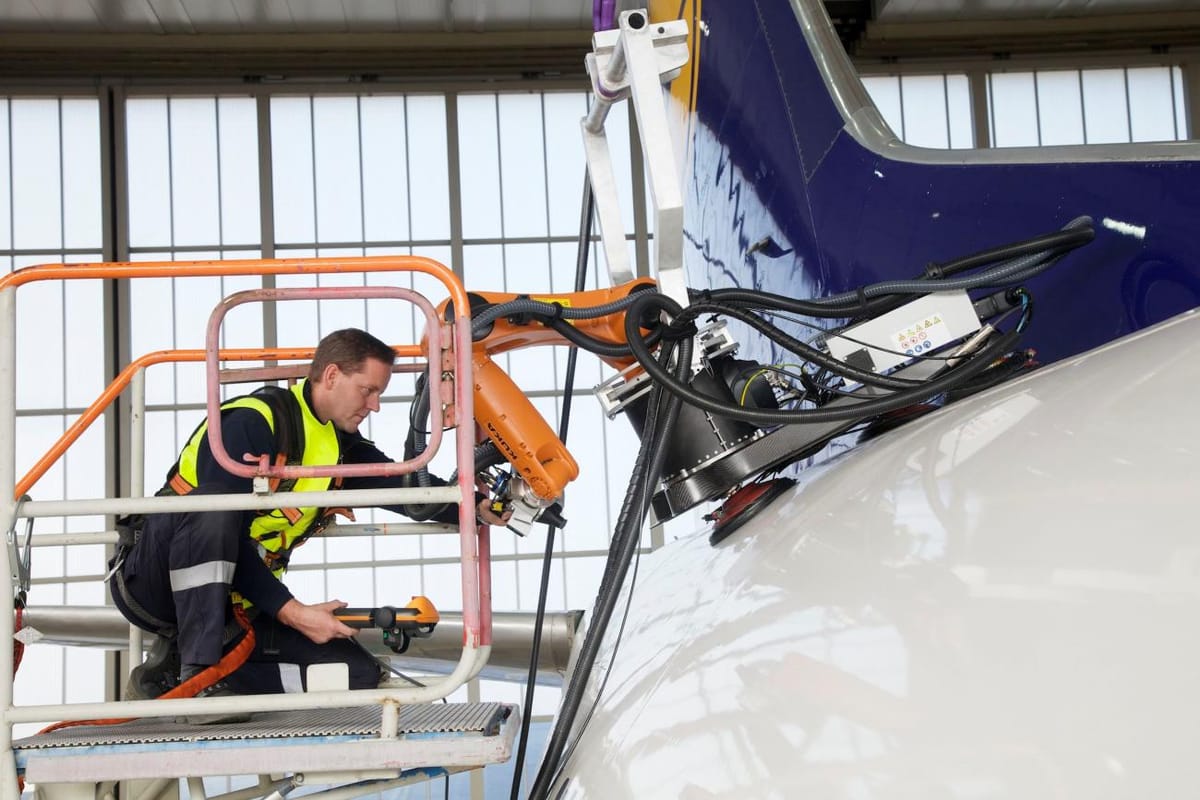The Aircraft Mechanic Meets Artificial Intelligence

The aviation technician must cope with a bewildering array of new technologies. Right now, the most daunting (and exciting) is the migration of AI into MRO. The change is spawning new careers that combine wrench turning with Silicon Valley know-how.
Artificial intelligence (AI) is invading nearly all industries, bringing with it capabilities once only dreamed of in science fiction. “Disruptive” technology destroys the old paradigms but historically has improved productivity and quality. Such is the case with AI and its role in the daily life of the aircraft mechanic.
Instead of seeing AI as a threat, the aircraft mechanic should see it as a career opportunity. Maintenance schools are creating new courses in AI and MRO shops increasingly require familiarity with AI for hiring.

AI allows the airplane mechanic to process data at blistering speeds without sacrificing safety and quality of work. As is often the case with rapid technological change, regulatory bodies are falling behind in adapting to the migration of AI into the MRO space. Unions also are bracing themselves for a new ball game in terms of whether a human or a machine should conduct sensitive maintenance work.
Various regulations that govern aircraft tech require the aviation technician to use only approved devices that do not attach to or interfere with the aircraft. Smart glasses, smartphones and high-definition cameras are providing new means for the aircraft maintenance engineer to collect and interpret data, to improve safety as well as operator satisfaction.
All of this disparate data from various devices needs to be quickly analyzed and rendered into actionable steps for the aircraft maintenance engineer. Decision making is increasingly delegated to computers that function rapidly — far more rapidly than the human brain.
One of the most influential breakthroughs in the AI realm is in computer vision. Smart cameras with ultra-sophisticated 3D chips can run deep learning models and scan in real time what’s occurring in the visual field of mechanics. This capability is being adopted by aircraft mechanics for their routine maintenance checks, in conjunction with entries filled into their digital logbooks.
The aircraft maintenance engineer is relying on smartphones as sensors. These phones can collect information about subtle, aberrant vibrations and similar anomalies in engines and other aircraft parts. They can also measure unusual activity during test runs. With an overlay of AI, diagnostics can be conducted considerably faster and more accurately.
Internet service providers like GoGo, GEE and ViaSat are becoming part of the MRO/AI infrastructure. They have the networks and bandwidth to collect data and transmit it to AI data centers.
Opening New Doors in Aircraft Tech
“Modern artificial intelligence is opening new doors in MRO, giving the aircraft mechanic new and formerly unheard-of capabilities,” says Richard Aboulafia, vice president of analysis at the Teal Group, an aerospace consultancy based in Fairfax, Virginia. “Advanced technology in MRO is creating a gusher of new data that needs to be interpreted in real time, at fast speeds. Artificial intelligence helps the aircraft mechanic do this.”
Aboulafia foresees a wave of new apps emerging in the near future that are built around AI, to give aircraft maintenance engineers “haptic” touchless interaction with AI computer centers.
The key is for Silicon Valley to develop these AI-centric apps without violating industry standards and regulations. Aircraft tech has high barriers to entry because of its red tape and myriad safety rules. Any new technology must jump over hurdles set by the FAA and other regulatory bodies overseas.
But the change already is happening in tangible ways. Lufthansa Technik has developed an automated inspection and repair robot, governed by AI, to look for combustor cracks, while several airlines have experimented with AI-controlled drones for automated aircraft exterior inspections.
With these robots and inspection drones, an aircraft mechanic is still needed to supervise operations and review the results, but fault recognition AI seems to be on a course to remove the need for human eyes.
Advances in AI machine learning are opening the door to predictive and preventive maintenance predicated on aircraft and engine sensor inputs.
But the airplane mechanic need not fear for his or her job. These AI-related technologies do not threaten to replace human workers. Instead, they provide productivity gains, quicker turnarounds and more accurate inspections. That benefits the MRO field, aircraft operators, passengers, and customers.
Disruptive change is inevitable, especially in the complex field of aircraft tech. The aircraft mechanic should embrace, not fight, artificial intelligence.
